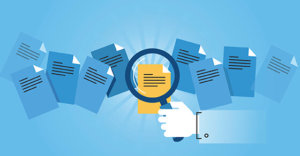Reporting Embedded Leases

In 2016, the Financial Accounting Standards Board (FASB) published guidance that requires major changes to how leases are reported on financial statements. One area of the guidance that’s especially complicated relates to “embedded” leases.
Updated Guidance
Accounting Standards Update (ASU) No. 2016-02, Leases (Topic 842), requires organizations to report on the balance sheet the assets and liabilities associated with leasing office space, vehicles and other assets. Public companies implemented the updated guidance in 2019.
In June, the FASB extended the effective date for ASU 2016-02 for private companies and not-for-profit organizations. The one-year deferral is welcome news for smaller organizations that have been trying to get a handle on the complex new rules during the COVID-19 crisis.
Hidden in the Fine Print
In some cases, a contract that qualifies as a lease doesn’t have the word “lease” written across the top. Instead, a lease may be embedded in a contract’s terms.
Unless private companies and nonprofits adopted the changes early, they’re currently expensing operating lease payments as they’re incurred, as per prior guidance. Carving out embedded leases from supply or service contracts wasn’t a big deal under those rules; the costs would be classified as operating expenses either way. But the updated guidance requires service contract payments to continue being expensed while embedded leases are reported on the balance sheet.
The updated guidance is clear about the identification and criteria for an embedded lease: A contract contains a lease if it conveys the right to control the use of an identified asset in exchange for cash or other consideration. This includes the right to obtain substantially all the economic benefits from the asset for a specific period.
Equipment leases may be buried in supply and service contracts with equipment manufacturers. Likewise, lease agreements may contain nonlease components, such as maintenance and property taxes.
Implementation Solutions
During the implementation phase for the updated guidance, you’ll need to train other departments, such as procurement, sales, operations and information technology, to recognize when contract terms convey the right to control the use of a specific asset. After implementation, you’ll need to execute controls or processes to identify embedded leases when contracts are signed.
To simplify matters, consider adopting the practical expedient in the updated accounting guidance that allows lessors to combine lease and nonlease components. While this treatment will increase the lease liability reported on your balance sheet, simplified reporting may be worthwhile, depending on the size and duration of the embedded leases.
Contact Us
For private companies and private not-for-profits, the updated lease guidance now goes into effect for fiscal years beginning after December 15, 2021 (or interim periods beginning after December 15, 2022). For public not-for-profits, the updated guidance now goes into effect for fiscal years beginning after December 15, 2019, including interim reporting periods.
A one-year deferral isn’t an excuse to procrastinate. The issue of embedded leases shows how implementing the updated guidance can be challenging and may require significant changes to systems and procedures. We can help.
© 2020
